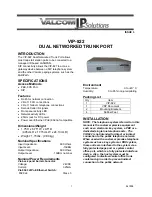
•
The cable for the gigabit link is a solid-core cable.
•
The open-ended cable is not terminated.
When you run TDR, the Switch does not report accurate information in these situations:
•
The cable for the gigabit link is a twisted-pair cable or is in series with a solid-core cable.
•
The link is a 10-megabit or a 100-megabit link.
•
The cable is a stranded cable.
•
The link partner is a Cisco IP Phone.
•
The link partner is not IEEE 802.3 compliant.
Debug Commands
Because debugging output is assigned high priority in the CPU process, it can render the system unusable.
For this reason, use
debug
commands only to troubleshoot specific problems or during troubleshooting
sessions with Cisco technical support staff. It is best to use
debug
commands during periods of lower
network traffic and fewer users. Debugging during these periods decreases the likelihood that increased
debug
command processing overhead will affect system use.
Caution
All
debug
commands are entered in privileged EXEC mode, and most
debug
commands take no arguments.
Related Topics
Redirecting Debug and Error Message Output, on page 1645
Example: Enabling All System Diagnostics, on page 1654
Onboard Failure Logging on the Switch
You can use the onboard failure logging (OBFL) feature to collect information about the Switch. The
information includes uptime, temperature, and voltage information and helps Cisco technical support
representatives to troubleshoot Switch problems. We recommend that you keep OBFL enabled and do not
erase the data stored in the flash memory.
By default, OBFL is enabled. It collects information about the Switch and small form-factor pluggable (SFP)
modules. The Switch stores this information in the flash memory:
•
CLI commands
—
Record of the OBFL CLI commands that are entered on a standalone Switch or a
switch stack member.
•
Environment data
—
Unique device identifier (UDI) information for a standalone Switch or a switch
stack member and for all the connected FRU devices: the product identification (PID), the version
identification (VID), and the serial number.
•
Message
—
Record of the hardware-related system messages generated by a standalone Switch or a
switch stack member.
•
Power over Ethernet (PoE)
—
Record of the power consumption of PoE ports on a standalone Switch
or a switch stack member.
Consolidated Platform Configuration Guide, Cisco IOS Release 15.2(4)E (Catalyst 2960-X Switches)
1630
Information About Troubleshooting the Software Configuration
Summary of Contents for Catalyst 2960 Series
Page 96: ......
Page 196: ......
Page 250: ......
Page 292: ......
Page 488: ......
Page 589: ...P A R T VI Cisco Flexible NetFlow Configuring NetFlow Lite page 509 ...
Page 590: ......
Page 619: ...P A R T VII QoS Configuring QoS page 539 Configuring Auto QoS page 645 ...
Page 620: ......
Page 750: ......
Page 1604: ......
Page 1740: ......
Page 2105: ...P A R T XII Configuring Cisco IOS IP SLAs Configuring Cisco IP SLAs page 2025 ...
Page 2106: ......
Page 2118: ......
Page 2164: ......















































